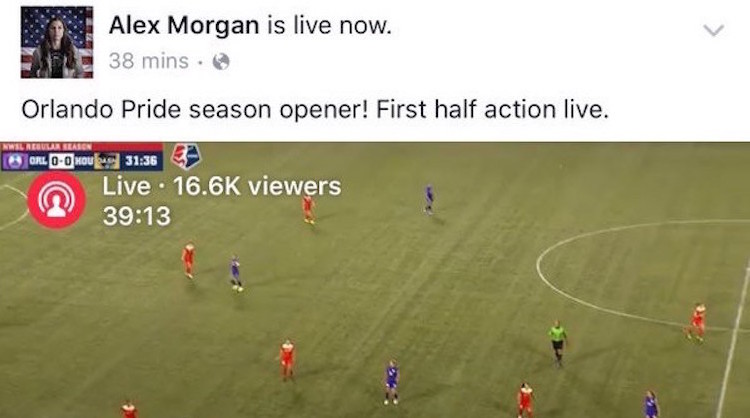Facebook is obsessed with live video this year as they continue to bet that it’s going to be a big traffic driver for publishers, brands, teams, and eventually ad dollars. Back in March, they tweaked their algorithm to give preference to live video and push it to the top of users newsfeed. People can also get notifications when pages they follow go live.
Back in April, more than 800,000 people tuned in to a 45 minute live stream on Buzzfeed’s Facebook page to watch how many rubber bands it took to explode a watermelon. Almost 11 million people have watched the stream in total. That’s absurd.
Safe to say live video has become a major part of Facebook’s plans for future and it’s willing to pay to help it grow even more.
Over the last few months, Facebook has signed almost 140 deals with media companies and celebrities to push live video across their Facebook channels. In total, $50 million dollars has been shelled out. Of that money, Facebook has allocated about $4 million of that for soccer teams and players, in hopes of capturing audiences all across the globe. The clubs and players they’ve recruited are impressive. FC Barcelona. Real Madrid. Arsenal. Manchester City. Iker Casillas. Alex Morgan. Kaká.

Earlier this year, Alex Morgan’s club Orlando Pride and the NWSL leveraged her page to stream the first full professional sporting event live on Facebook. That match reached more than 550,000 unique people, which is more viewers than most MLS games on cable television. Since then, we’ve seen teams go live in numerous ways including: training sessions, manager and player press conferences, new signing introductions, and more.
The beauty of Facebook live video is that it also lives beyond the “live” part. The video stays on the team’s Facebook page and fans can access it any point if they’re not able to tune-in at the exact minute. For those who can tune in, it’s fantastic behind-the-scenes content that fans have rarely, if ever, been exposed to before. It’s unscripted, unedited, and raw. For those who watch later, it’s still a great a unique piece of content for their team. Facebook has also upped the time limit on live videos – previously at an hour – to four hours – which of course allows a full soccer match to be broadcast in one stream instead of one for each half.
With Twitter also going all in on live video – they’ve recently completed deals with Wimbledon, the NFL, NBA, NHL, and multiple NCAA leagues – to showcase live sporting events and Twitter-specific shows, Facebook has competition in live video. Add in curated Snapchat stories for many major sporting events all over the globe, and you have even more competition. For the platforms, and everyone who uses the platforms, competition is a good thing. Facebook, Twitter, and Snapchat are always trying to improve the user experience and bring more live content to their fans in unique ways.
Let 2016 be the year of Facebook Live and let the upcoming 2016-17 soccer season kickstart even more access for fans.
Categories: Digital Content, Social Media, Technology
